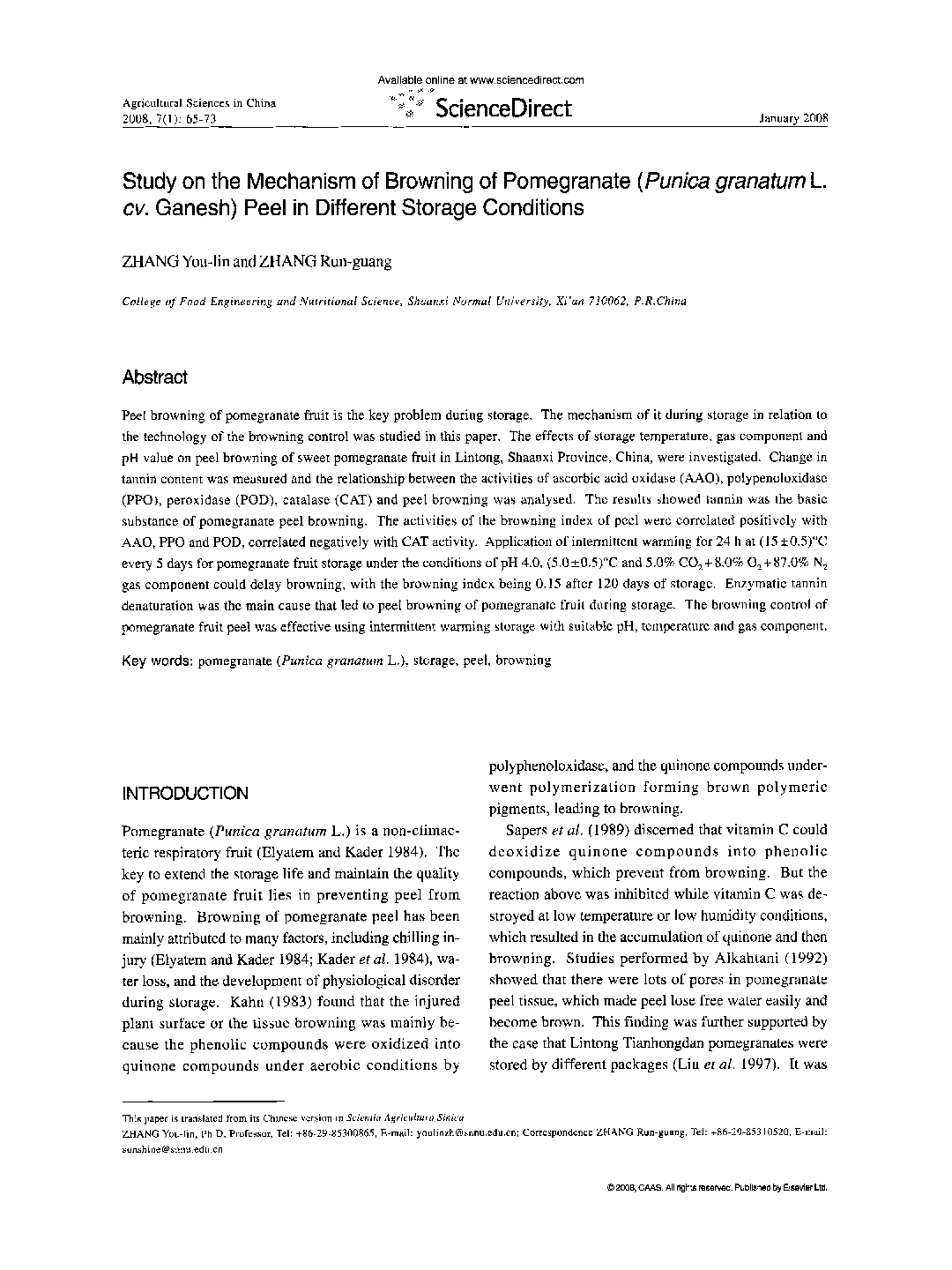| Article ID | Journal | Published Year | Pages | File Type |
|---|---|---|---|---|
| 4490725 | Agricultural Sciences in China | 2008 | 9 Pages |
Peel browning of pomegranate fruit is the key problem during storage. The mechanism of it during storage in relation to the technology of the browning control was studied in this paper. The effects of storage temperature, gas component and pH value on peel browning of sweet pomegranate fruit in Lintong, Shaanxi Province, China, were investigated. Change in tannin content was measured and the relationship between the activities of ascorbic acid oxidase (AAO), polypenoloxidase (PPO), peroxidase (POD), catalase (CAT) and peel browning was analysed. The results showed tannin was the basic substance of pomegranate peel browning. The activities of the browning index of peel were correlated positively with AAO, PPO and POD, correlated negatively with CAT activity. Application of intermittent warming for 24 h at (15 ± 0.5)°C every 5 days for pomegranate fruit storage under the conditions of pH 4.0, (5.0 ± 0.5)°C and 5.0% CO2 + 8.0% O2+87.0% N2 gas component could delay browning, with the browning index being 0.15 after 120 days of storage. Enzymatic tannin denaturation was the main cause that led to peel browning of pomegranate fruit during storage. The browning control of pomegranate fruit peel was effective using intermittent warming storage with suitable pH, temperature and gas component.
